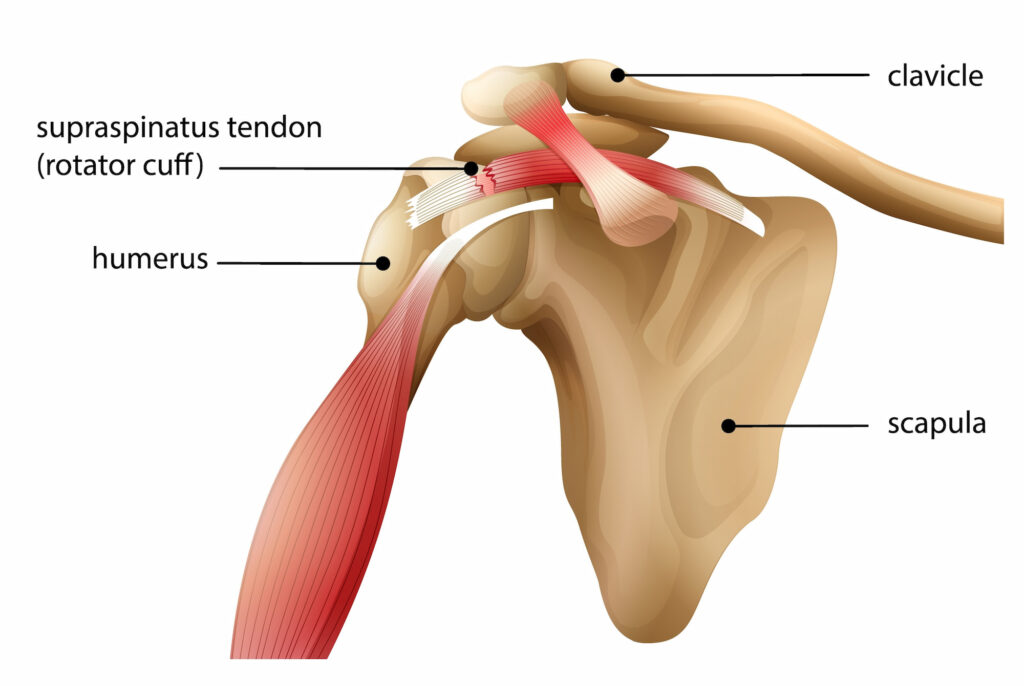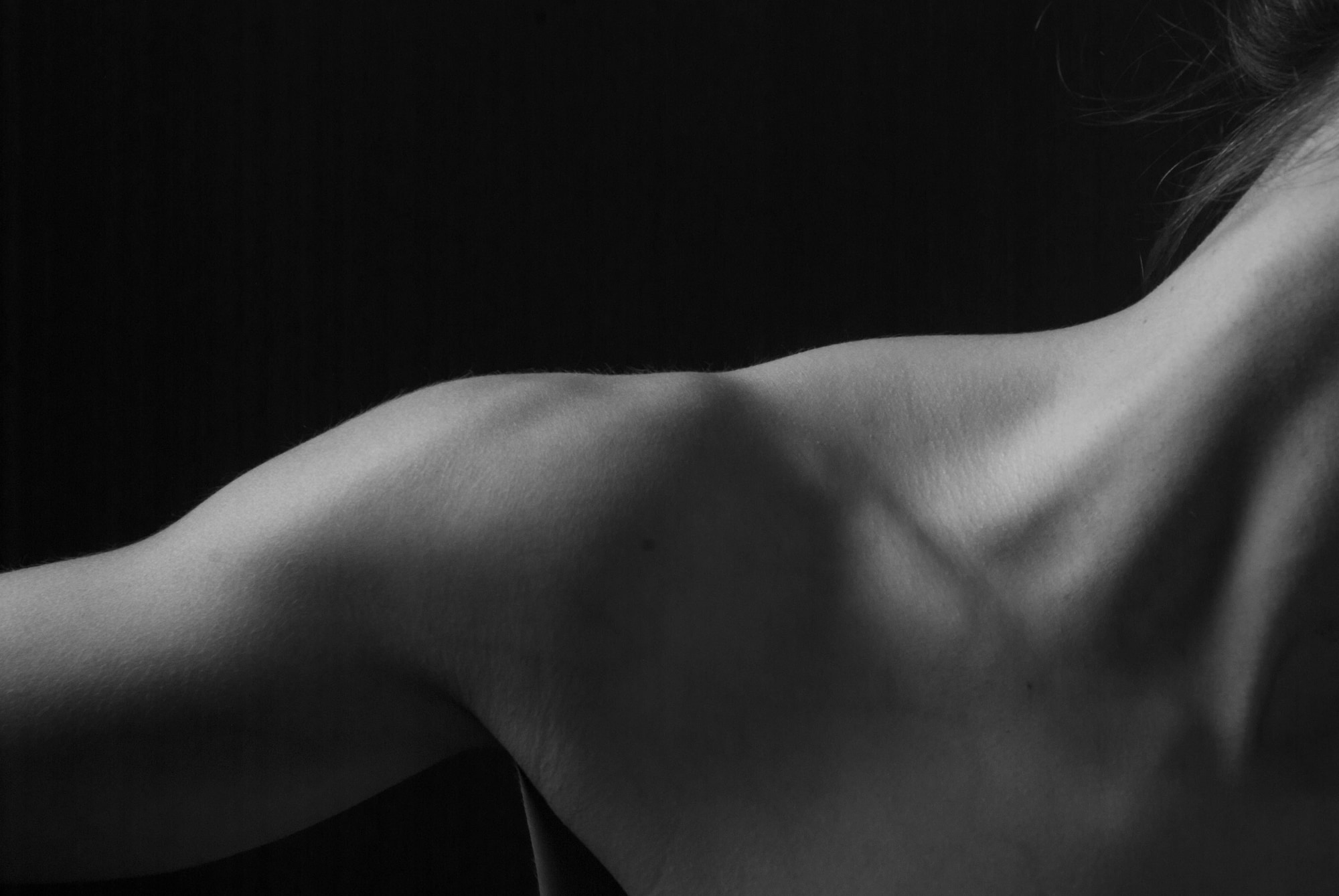The rotator cuff is crucial for shoulder stability and movement, allowing a wide range of motion for the shoulder joint. Rotator cuff tears are generally classified into two types:
- Degenerative Tears
These develop gradually due to age-related wear and tear, commonly affecting individuals over 60. Often, there’s no specific injury that causes the tear.
- Acute Traumatic Tears
These occur suddenly after an injury, such as lifting something heavy or falling, in otherwise healthy tendons and muscles and usually occur in younger adults.
What causes a rotator cuff tear?
- Tendons can weaken with age, increasing the risk of tears. This is especially the case for people over 60, with a lifetime of shoulder use.
- High-impact activities or repetitive overhead movements (like those in sports or jobs that require heavy lifting) stress the rotator cuff, leading to gradual wear and tear.
- Traumatic tears can occur from accidents, such as falls, lifting heavy objects, or sudden shoulder strain. These are often more severe and may require prompt treatment.

What symptoms would I notice?
- Pain in the shoulder typically felt in the outer section, which can radiate down the arm and which may worsen at night.
- The shoulder may feel weaker, especially when lifting objects overhead or away from the body.
- Activities involving lifting the arm, such as reaching for an item on a high shelf, can become challenging and painful.
How is a tear diagnosed?
A GP will review your symptoms, performing a physical examination to assess shoulder movement and pinpoint areas of tenderness.
X-rays help rule out other potential causes of shoulder pain (though they cannot directly show a rotator cuff tear). An MRI can offer insight into the soft tissues and is essential for assessing the tear’s severity, size, and exact location. This imaging helps guide the treatment approach. While an ultrasound can diagnose a tear, an MRI is used to get more information about the state of not just the tendon but the muscles and cartilage as well.
Treatment options
Many rotator cuff tears, particularly degenerative ones, can be managed without surgery. Surgery may be considered if non-operative treatments are ineffective, or may be offered for acute traumatic tears in younger adults.
Non-operative treatments
- A customised physiotherapy program to strengthen surrounding muscles and stabilise the shoulder, often improving function and reducing pain.
- Injections to reduce inflammation and provide temporary pain relief – particularly helpful in managing degenerative tears.
- Reducing or avoiding movements that strain the shoulder can relieve pain and prevent further damage.
Operative treatments
- Rotator Cuff Repair
This procedure reattaches the torn tendon to the top of the humerus. Depending on the tear’s complexity, it can be performed as a keyhole (arthroscopic) surgery or as an open repair. This should be performed early for acute traumatic tears in patients under 50 years old. It is rarely performed in patients over the age of 70. Read more about this surgery and the expected recovery process below:
- Reverse Total Shoulder Replacement
In cases of rotator cuff arthropathy (shoulder arthritis from untreated tears) or large tears with a shoulder that can no longer be moved, this procedure replaces the joint to restore range of motion and relieve pain. Whilst it is likely to improve function and movement, the range of motion after shoulder replacement surgery is usually much less than what a young adult would have without any shoulder problems. Read more about this surgery and the expected recovery process below:
- Tendon Transfer Surgery
A tendon transfer from another part of the body may be used to restore shoulder function after massive tears that cannot be repaired.
- Superior Capsular Reconstruction
This involves reconstructing the joint capsule to improve shoulder stability when a severe tear cannot be directly repaired. This is a relatively new procedure, with limited long term evidence to support it, and Dr Lambers does not offer this procedure.
Rotator Cuff Tear with surgery with Dr Lambers
Dr Lambers’ expertise in minimally invasive and open techniques for rotator cuff repair will be tailored to each patient’s condition, considering factors such as age, activity level, and tear severity. A structured rehabilitation program is designed to support healing, strengthen the shoulder, and ensure a successful recovery post-surgery.

